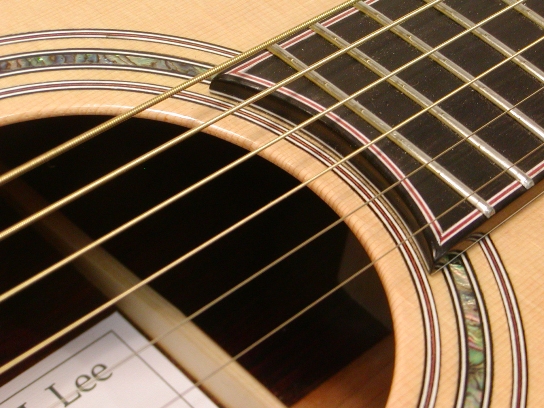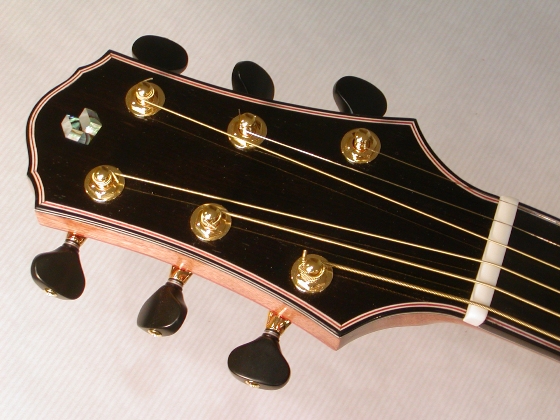Thanks to everyone for the extremely kind words. Here are answers to questions.
To Brock and Bob:
The style for the back of the head was inspired by Jim Olson’s. I tried to re-create the look of his, but in my case, the head has a scarf joint with what I would call a “faux V-joint” volute.
I cut my head with a flush-trim bit around an acrylic template. This is done in an open-ended routing box where the head and template are bolted to a stage below that has threaded inserts.
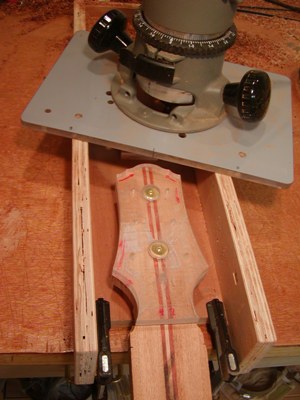
Using the same router box and head template, I shape the front and back head plates, only this time, I use a rabbeting bit to cut the plates slightly smaller than the head to allow for the width of the binding and purfs. Here, the head plate and routing template are bolted through holes positioned where the tuner posts will eventually go. The “V” cut-out and the adjacent curves at the bottom of the plate are cut on the band saw. Left: (koa for another SJ), Right: cocobolo.
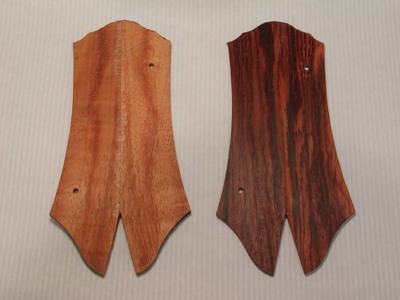
The binding and purfs are added directly to the head plate and surface sanded before gluing to the head. The binding has a little extra thickness to overhang the edge of the head, but will be later scraped flush to the head when glued.
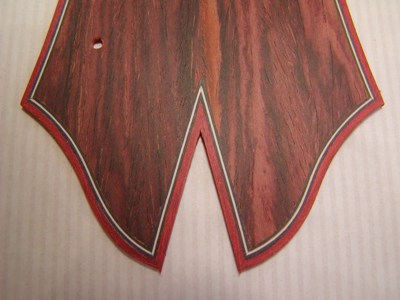
Now back to the neck and head.... Using the router box, the head is flipped over with the back of the head facing up, and the back of the head is reduced to final thickness above the widest part of the head and to 3 mm thicker below this point to allow the hand carving of a smooth ramp to the end of the head. Here you can see it as a small step just in front of the volute's vertex. Providing the additional 3 mm for the ramp is very important; otherwise, the bottom end of the head plate will likely end up somewhere below the thickest point on the back of the neck—not a good look. The actual amount for extra thickness will depend on your desired head angle (14 degrees), head thickness (11 mm thick head + 2.5 mm thick back plate), and neck thickness at the nut (21 mm). During these thickness-reducing steps with the router, I roughly leave behind a triangular peninsula that will become the volute.
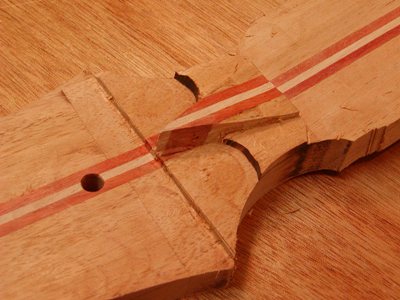
Now comes the fitting of the “V” cut-out in the head plate to the volute. Positioning the plate above the head with V cut-out above the volute peninsula, I trace the V onto the head and cut it with a razor saw and chisel. With the fit perfect, I glue the plate to the head. This fitting step is a little time-consuming, but for my first attempt, it worked well. I hope to develop a template routing system in the future.
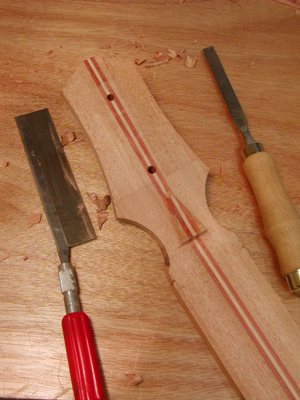
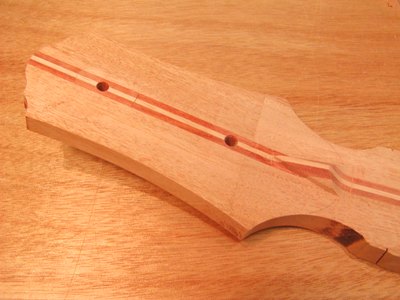
An aside: The router box idea turned out to be very handy. I used it to rout the truss rod and carbon fiber rod slots by adding runners to the router platform. I found that fur screws coming into the box at a downward angle made good skewers to hold down the neck. I also made a similar box to shape my bridges (like shaping the head above) and to slot them (with the bridge blank mounted in the box at an angle for compensation and the runners attached to the router platform).
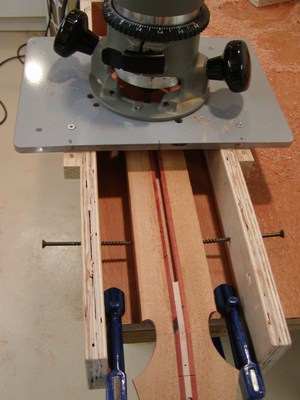
To Arnt:
The red purfling is rust-colored veneer from LMI.
The head is attached with a scarf joint as described above.
More shop pics are archived somewhere in a “Show me your shop” thread. Sadly, I just moved and now I have to rebuild the shop. It was a beautiful shop. Ah, the glory that was Rome.
To Matt:
My impression is that it was easier for me to produce a fine sounding steel string guitar than a classical. The voicing process (thanks again to John Mayes) was much more intuitive, and the changes were very apparent as it progressed through brace carving. I’m convinced that this is due to fact that braces start and end far more massive than on classicals, so there is plenty of room for gradual improvement during voicing. On classicals, one teeters on a knife edge between superb and awful.
In terms of time (not counting methods development and making jigs), I spent 165 hours on this steel string, building in a batch of two (i.e. 330 hours for two SJ’s--pics of the Carpathian and Koa cutaway coming soon!). My classicals take 125-140 hours. Why more time for steel strings? It’s all the #$%@$% additional binding, purfling, volutes, extra head plates, electronics, and fret markers that are expected on steel string instruments! Most classical players adhere to tradition and don’t want that on their guitars. The only thing that takes more time on a classical is a handmade rosette.
I’m really glad that I built the steel strings. It opened up a whole new world of techniques and concepts to me that will greatly improve my classicals.
To Bob:
Around the back of the head is bloodwood from (RC Tonewoods) with black and white fiber purflings.
To Carlton:
Yes, I shaped the neck so that I could comfortably move between it and a classical. It is 48 mm at the nut, which is midway between standard steel strings and classicals. The back of the neck is shaped like many classicals—somewhat flat with the thickest portion slightly on the bass side.
|
